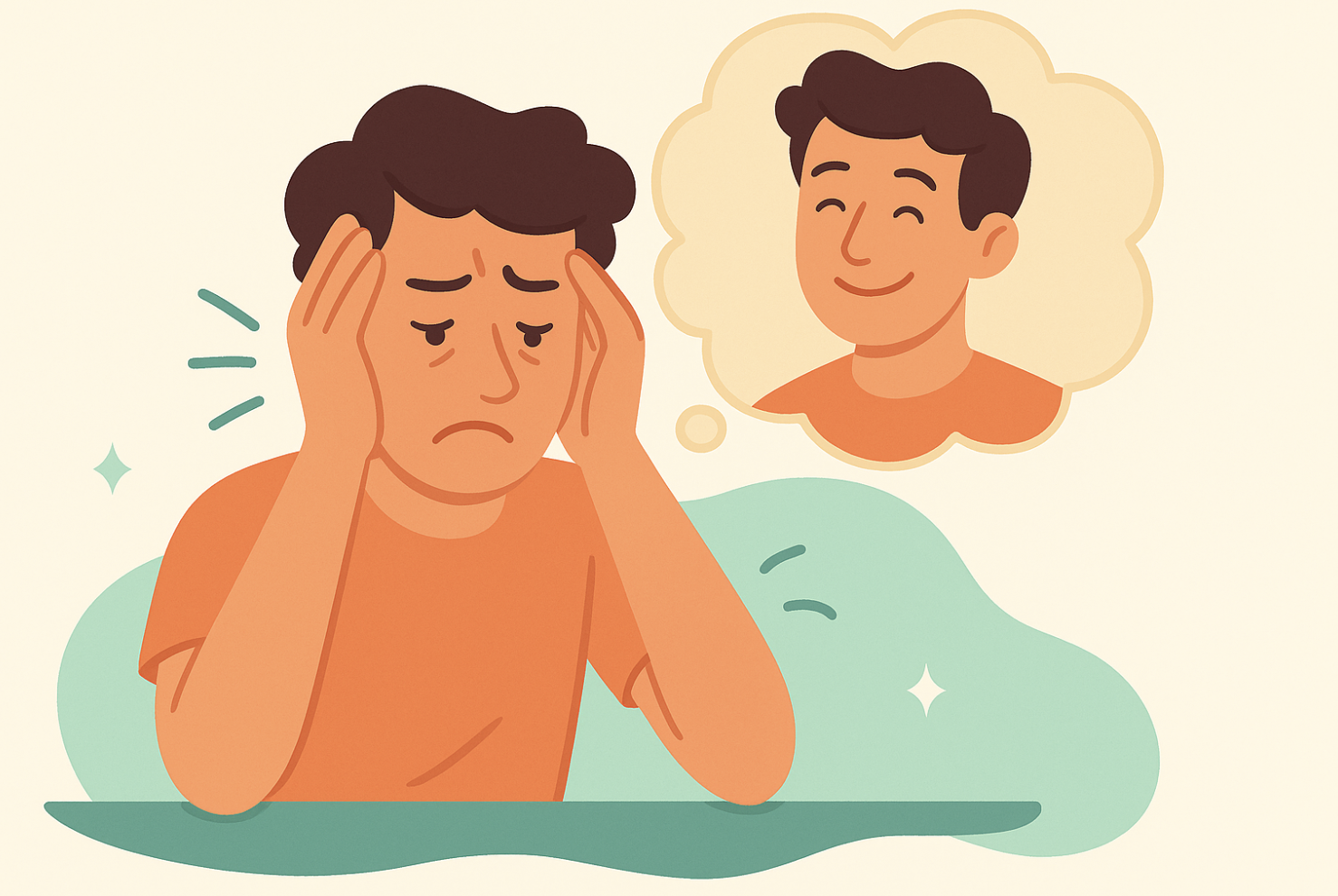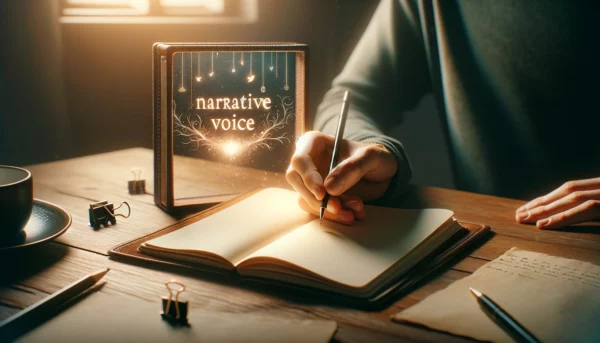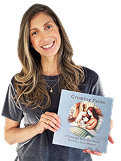Every story needs a conflict, but sometimes, the hardest battles aren’t fought with villains or monsters—they’re fought within the character’s own mind. That’s where character vs self comes in: the internal struggle where a character’s biggest enemy is, well, themselves. It’s like wrestling with your own reflection in a mirror—messy, complicated, and strangely relatable.
In this post, we’ll take a closer look at what character vs self really means, share some compelling examples from literature and film, and talk about how you can use this conflict to make your characters—and your story—truly stand out. Whether you’re an author looking to create deeper characters or just someone who loves a good story, you’re in for a treat. Let’s dive in and see what happens when the toughest enemy is inside.
What is Character vs Self?
Character vs self is an internal conflict where a character faces a battle within their own mind, struggling with their emotions, beliefs, or desires. This conflict often involves a moral dilemma, self-doubt, or a struggle for personal growth. It’s not about defeating a villain or conquering an external force; it’s about overcoming the obstacles within—like fighting your own fears or deciding between what’s right and what’s easy.
This internal struggle plays a pivotal role in shaping a character’s development. It forces them to confront their flaws, make tough decisions, and evolve throughout the story. A character’s journey to resolve their own inner turmoil often becomes the core of their arc, driving emotional depth and authenticity.
Unlike external conflicts, such as character vs nature or character vs society, character vs self is the most intimate type of conflict, focusing on the character’s internal world and personal transformation.
The Definition of Character vs Self
At its core, character vs self is the battle a character fights within their own mind. It’s the moment when a character’s thoughts, desires, values, or beliefs collide, forcing them to confront their true nature or make difficult choices. This type of conflict often manifests as feelings of guilt, fear, or confusion, challenging the character to evolve and grow. Whether it’s a choice between doing what’s right or what’s easy, or struggling to overcome a personal flaw, character vs self is a journey of self-discovery and transformation. It’s about characters grappling with their own identity, often leading to profound personal change by the story’s end.
Your Publishing Journey Awaits – Start NowWhat Does Character vs Self Mean?
When we talk about character vs self, we’re referring to an internal tug-of-war where the character is their own antagonist. It’s the emotional and psychological struggle that takes place inside their head. Imagine a character standing at a crossroads, torn between their desires and their values, or between who they are and who they aspire to be. This conflict often brings out deep questions: What kind of person am I? What do I stand for? Can I change?
At its heart, character vs self is about self-awareness and personal growth. It’s the internal reckoning that leads to transformation. For the character, it can be a journey of redemption, overcoming inner demons, or learning to accept their true self. It’s one of the most relatable conflicts because, in some form or another, we all face it in our own lives—making it a timeless and powerful tool in storytelling.
Character vs Self Examples
To really grasp the power of character vs self, it helps to look at some of the most memorable examples in literature and film. These stories show how this internal struggle drives characters to change, often in profound ways.
One classic example is Hamlet by William Shakespeare. Hamlet’s internal conflict is the stuff of legend. He’s torn between avenging his father’s murder and the moral consequences of killing his uncle. His endless questioning, indecision, and search for meaning fuel the play’s tragic arc and showcase the depth of his internal struggle.
Another great example is Holden Caulfield from The Catcher in the Rye by J.D. Salinger. Holden grapples with the pain of losing his younger brother, the disillusionment of adulthood, and his fear of growing up. His battle with himself plays out through his cynicism and deep emotional conflict, making him a timeless character in literary history.
More recently, in Inside Out (2015), we see a more literal depiction of internal conflict. Riley, a young girl, faces the turmoil of growing up and dealing with the emotional shifts of adolescence. The personifications of her emotions—Joy, Sadness, Anger, Fear, and Disgust—show how she struggles with her identity, her feelings of loss, and her need to adapt to change.
These examples illustrate how character vs self doesn’t just shape a plot—it shapes the character’s journey and often becomes the heart of the story. Whether through moral dilemmas, personal flaws, or coming-of-age moments, this internal conflict brings depth and relatability to the characters we root for.
Character vs Self in Literature
The character vs self conflict is one of the most powerful literary tools used to develop characters and propel the plot. It’s deeply personal, and when done well, it engages readers on an emotional level, making the character’s journey feel authentic and meaningful. Unlike external conflicts, which often involve a clear villain or physical threat, character vs self is centered on a character’s internal struggles, which can be just as, if not more, complex.
This internal battle can take many forms—whether it’s a moral dilemma, self-doubt, or the pressure to change. The key to making character vs self compelling is showing the character’s vulnerability and how they wrestle with their choices. Think of the classic hero’s journey: for a character to evolve and grow, they must first face their internal conflicts. By doing so, they often discover something new about themselves, learn important life lessons, or find a way to resolve inner turmoil.
Take Crime and Punishment by Fyodor Dostoevsky. The protagonist, Raskolnikov, is consumed by guilt after committing murder. His internal battle between justifying his crime and the overwhelming feelings of remorse creates a compelling character arc. Raskolnikov’s journey is shaped by his internal conflict, leading to his eventual redemption. Without this inner struggle, the plot wouldn’t carry the same weight.
Another great example is The Bell Jar by Sylvia Plath. Esther Greenwood’s battle with mental illness and her feelings of self-worth highlight the character vs self conflict in a very raw and relatable way. The story delves deeply into Esther’s inner turmoil, showing her struggle to reconcile her personal identity with societal expectations.
In To Kill a Mockingbird by Harper Lee, Scout Finch faces an internal conflict as she matures and learns the realities of racism and injustice. Her journey toward understanding her place in the world, shaped by her father’s moral compass and her own growing awareness, is another powerful instance of character vs self.
What makes character vs self so compelling in literature is that it’s not about winning or losing a battle—it’s about the process of transformation. The character may not come out unscathed, but the internal conflict forces them to confront who they are, who they want to be, and what they believe in. This struggle is a crucial part of storytelling that connects readers to the character on a deeper level.
How to Use Character vs Self in Your Own Writing
Now that we’ve explored what character vs self is and how it shapes the best stories, let’s talk about how you can incorporate this powerful conflict into your own writing. Whether you’re crafting a novel, screenplay, or short story, internal conflict can add layers of complexity to your characters and make your plot more engaging.
Here are some tips to help you create a compelling character vs self conflict:
- Identify the Core Conflict
To start, determine what internal struggle your character will face. Are they grappling with guilt, fear, self-doubt, or identity issues? This struggle should reflect their core beliefs or desires, challenging them to make tough choices. For example, if your character desires success but is afraid of failure, their internal conflict might center around overcoming their fear to achieve their goals. - Create High Stakes
Internal conflict works best when the stakes feel high. What’s at risk if your character doesn’t confront their internal battle? Will they lose something important—like their relationships, identity, or integrity? The higher the stakes, the more invested your readers will be in the outcome. - Show, Don’t Tell
Rather than directly telling readers what’s going on inside the character’s head, show the internal struggle through actions, dialogue, and emotions. For example, if your character is unsure of themselves, show them hesitating before making decisions, questioning their abilities, or seeking validation from others. Use body language, internal monologues, and reactions to make the conflict feel real. - Use the Conflict to Drive Character Development
One of the most rewarding aspects of character vs self is watching the character change over time. Use the internal struggle to shape their journey. Maybe they learn to embrace vulnerability, confront their fears, or reconcile their past. This character arc should be gradual, with small victories and setbacks, reflecting real-life growth. - Make the Resolution Satisfying
The resolution of the character vs self conflict doesn’t always have to be “happy,” but it should feel earned. Whether your character finds peace, achieves redemption, or continues to wrestle with their internal struggles, ensure that the resolution feels true to the journey. This can be a powerful moment of closure for readers, as they’ve witnessed the character’s transformation firsthand. - Avoid Over-Simplification
Internal conflict isn’t always black and white. In real life, we often struggle with competing desires or beliefs. Don’t be afraid to make the conflict complex—your character can have multiple, conflicting desires that force them to make difficult choices. For example, a character might want to stay true to their moral values while also wanting to protect a loved one, creating a moral dilemma that tests their strength.
By weaving character vs self into your story, you can create a more authentic, emotionally resonant experience for your readers. It’s a chance to explore universal themes like identity, change, and personal growth, all while giving your characters a compelling journey that keeps audiences hooked.
The Power of Character vs Self: Transforming Your Story and Characters
In the world of storytelling, few conflicts are as powerful and relatable as character vs self. This internal battle, where the character struggles against their own fears, desires, and flaws, can shape the very heart of a story. It drives character development, emotional depth, and ultimately, the transformation that makes a narrative truly memorable.
Whether it’s Hamlet grappling with his moral dilemmas, Holden Caulfield wrestling with his place in the world, or even a fictional character on a more personal journey, character vs self brings a profound sense of authenticity to any story. It reminds us that the hardest battles are often the ones we fight within ourselves—and that’s something we can all relate to.
So, the next time you sit down to write, consider how this powerful internal conflict might fuel your characters’ journey. Let them face their own demons, make difficult choices, and evolve in ways that will resonate with your readers long after the story ends.
Character vs self isn’t just a conflict—it’s an opportunity for growth, both for your characters and for your storytelling. Embrace it, and watch your characters come to life in ways you never expected.
FAQs – Character vs Self
Q: What is an example of character vs self?
haracter vs self occurs when a character struggles with internal conflicts, often related to emotions, moral dilemmas, or personal beliefs. A classic example is Hamlet in Hamlet. He experiences deep internal turmoil, wrestling with guilt, indecision, and doubt about avenging his father’s murder. His inability to act, due to his philosophical and emotional struggles, makes this an excellent example of character vs self conflict.
Q: What is the difference between character and self?
Character refers to a person’s traits, values, and behaviors—essentially, the outward manifestation of who they are and how they interact with the world. Self, on the other hand, is a more internal concept that involves how a person views themselves, their identity, and their beliefs. While character is shaped by external influences and actions, self is more about personal perception and self-awareness. The difference lies in character being observable to others, whereas self is an internal experience.
Q: What defines a person’s character?
A person’s character is defined by a combination of their values, beliefs, actions, and personality traits. It’s the sum of how they consistently behave, how they treat others, and their ability to make moral and ethical decisions. While genetics and upbringing play a role, character is largely shaped by life experiences, choices, and the environment. The way a person responds to challenges or how they act when no one is watching can reveal the depth and complexity of their character.
Q: What is an example of character vs self in Fahrenheit 451?
In Fahrenheit 451, Guy Montag, the protagonist, goes through a profound internal conflict, making it a prime example of character vs self. Montag is a fireman who burns books in a society that bans them, but as he begins to question the purpose of his work and his own role in suppressing knowledge, he struggles internally. He faces the dilemma of following his established beliefs and societal expectations or challenging them to discover the truth. This internal conflict becomes the catalyst for his transformation.
Q: How do you know your own character?
Knowing your own character involves self-reflection and awareness. By looking at your actions, values, and how you respond to challenges, you can start to understand the true nature of your character. Examining how you handle situations such as adversity, relationships, or decisions when faced with a moral choice reveals your core beliefs and principles. Feedback from trusted others also plays a role, as they can provide an external perspective on your strengths, weaknesses, and behaviors that you may not always notice.
Q: What is the meaning of person vs self?
Person vs self refers to an internal conflict where a character battles their own emotions, desires, or beliefs. This type of conflict often centers around personal dilemmas, such as struggling with guilt, fear, or identity. It’s a crucial theme in many stories, as it allows characters to evolve and grow. For instance, a character may wrestle with a moral decision or have to choose between two competing desires. This internal struggle can lead to personal growth or, in some cases, tragic consequences depending on how the character resolves the conflict.
Q: Is character vs self a theme?
Yes, character vs self is a significant theme in literature, especially in stories that focus on personal growth, moral choices, or emotional struggles. It represents the internal conflicts that characters face, often leading to character development. This theme is commonly seen in coming-of-age stories, psychological dramas, and literary works that delve into the complexities of human emotion. It’s also present in more introspective or existential narratives, where characters must confront their own beliefs, fears, and desires to achieve self-understanding or transformation.
Q: What is the character’s self in The Giver?
In The Giver, Jonas experiences an internal journey of self-discovery that becomes central to the story. At the beginning, he is part of a society that suppresses individuality and emotions. However, as he receives memories of the past from The Giver, Jonas begins to understand his true self—his capacity for deep emotions, his desire for freedom, and his growing awareness of the limitations of his society. His internal conflict revolves around the choice to accept the comfortable, controlled life he’s known or to confront the truth and embrace the uncertainties that come with true self-awareness. His journey is an exploration of identity and the human experience.







